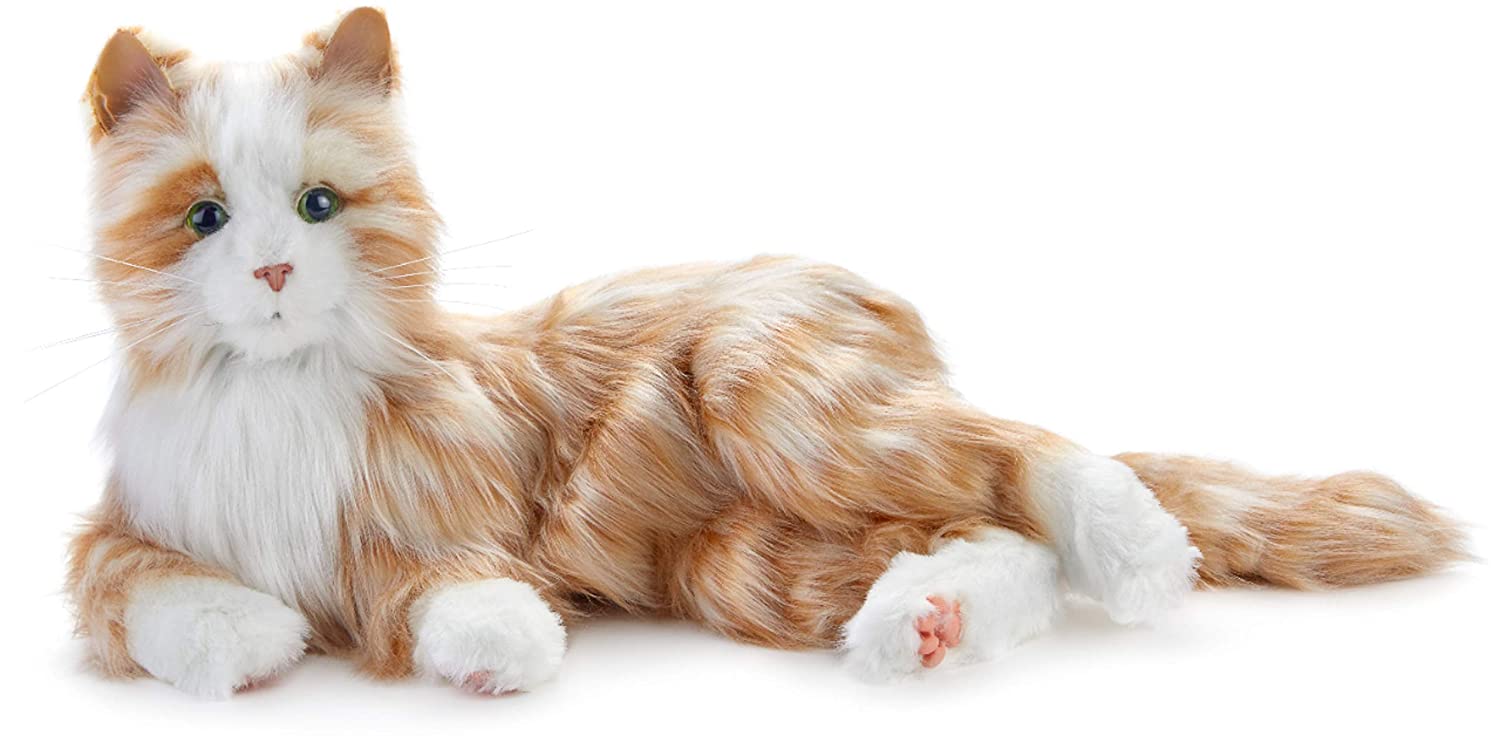Product: Companion pet cat
Produced by: Joy for All
Cost: ~$124.99 USD (but available from various suppliers at differing price points)
Product Summary:
The Companion Pet Cat is a support device produced by Joy For All and sold through a variety of online retailers. The device has been designed to look, feel and sound like an actual cat and give the user a close to lifelike experience. The Companion Pet Cat responds to user interactions, such as petting or brushing (brush included), and will move and purr to give sensory feedback to the user. This device is marketed towards an elderly demographic, specifically those with dementia.
Highlights:
- Easy set-up (add batteries and flip the on/off switch)
- Available in 3 colours: orange, grey, and black
- Subtle sensory feedback to provide self-regulatory support without becoming distracting
- Purring and breathing patterns encourage the user to naturally match their own breathing pattern with the device, which can be calming for an individual in mid-late stage dementia and those experiencing sundowning symptoms
Lowlights:
- Not 100% realistic, both visually and with movement, making this a less ideal option for those with early stage dementia
- Movement mechanisms have little padding, adding risk of damage if dropped or thrown
- Though weighted, the device is quite light; users who are seeking proprioceptive feedback may be best to pair this device with a weighted lap blanket
- Not possible to move body or limbs of the Companion Pet Cat to place to different positions, which may make the device appear less realistic for the user
Ratings:
Ease of Use: Grab and Go ★★★★★
Adaptability: Wide Variety of Settings Available ★★★☆☆
Accessibility: Broad Range of Users Served ★★★★★
Cost vs. Value: Worthwhile Expense ★★★★☆
Overall Rating: ★★★★
Final Word:
The Companion Pet Cat has been designed to meet dementia needs based on scientifically backed studies. Animatronic pets have been shown to decrease anxiety and agitation in individuals with dementia and encourage a calming response from the user, similar to that experienced through the use of live therapy animals.
Regardless of the brand, animatronic dementia support pets are best introduced when the individual is in mid-stage dementia and work particularly well for those experiencing sundowning symptoms. The support pet should always be introduced as a “pet” and not as a “toy”. Users should be encouraged to name their new pet and engage with it during times when they would typically engage with a live animal – for example, having a cat sit on your lap while watching tv. When introduced in mid-stage dementia, the individual is able to develop a bond with the animal, much like you would with a teddy bear, and find comfort and security through that bond.
In late-stage dementia this bond provides the attachment needed for the user to instinctively respond to the device when escalated, matching their breathing pattern with the slow regular pattern of the dementia pet and in turn, calming down. This is a similar response experienced when placing a wrapped clock or hot water bottle beside a newly separated kitten – because of the familiarity of the faux heartbeat and warmth, the kitten is comforted and calmed even though it is not actually its mother beside it.
Joy For All has created a quality dementia support device that is easy to set up and use. Because there are various suppliers through which to access the device, it may be possible to find the Companion Pet Cat at a reduced price to make purchasing this support more affordable. Overall, there are scientifically demonstrated benefits to introducing an animatronic support pet for individuals with dementia, and for individuals supporting someone through this stage of life, this may be a worthwhile expense to consider.



